Turtle Geometry
Alongside our L-Systems, we were given three exercises to answer about Turtle Geometry. They are shown and answered below.
- 1a. What is the radius of the circle drawn by polygonHalt(1, 1)?
- With our polygonal “circle”, we can find something of a circumference by tracking our distance until we reach our origin. Since we advance one unit for every one degree of rotation, this will be a value of 360. Using equations of circles, we find that r = C/2π, giving us r = 360/2π or r = 180/π. Note that 360 degrees is equal to 2π radians, based on our “unit” of measurement, do we then have a circle of radius 1? Certainly radius is either 1 or the aforementioned 180/π, or about 57 pixels.
- 1b. What is the radius of the circles drawn by polygonHalt(2, 2), polygonHalt(1, 1), and polygonHalt(0.5, 0.5), all with the same curvature, approaching a true mathematical circle in the limit?
- If we use the same method as above, where we track units of measure traveled until we reach our origin, we see that all of these drawings with the same curvature have the same circumference of the circle. Our calculation from the above holds for all three, being r = 180/π, or about 57 pixels.
- 1c. Use the simple-closed-path theorem to give a formula relating the total turning over the arc to the (interior) angles, A and B, that the arc makes with the line.
- The simple-closed-path theorem states that the sum of exterior angles of any simple polygon is 360 degrees. We are posited a simple arcing path with no crosses, joined by a straight line. If interior angles for where the line meets the arc are A and B, then let their exterior angle be equal to (180 – A) and (180 – B) respectively. These new angles plus the total turning over the arc will equal 360 by our theorem. This means in order to maintain the equation, our total turning over the arc must be equal to A + B.
L-System Investigation
Firstly for the creation of our L-Systems, we of course needed objects to replicate. The selection of which would be best to build in an L-System was interesting. I initially went out and took photographs of dozens of different objects that had different forms to my eye. The photographing portion didn’t raise any difficulties, save for trying to get good, unobscured and representative angles of each. Once all the photos were taken, the next process was to filter it down to three objects I wanted to make into an L-System.
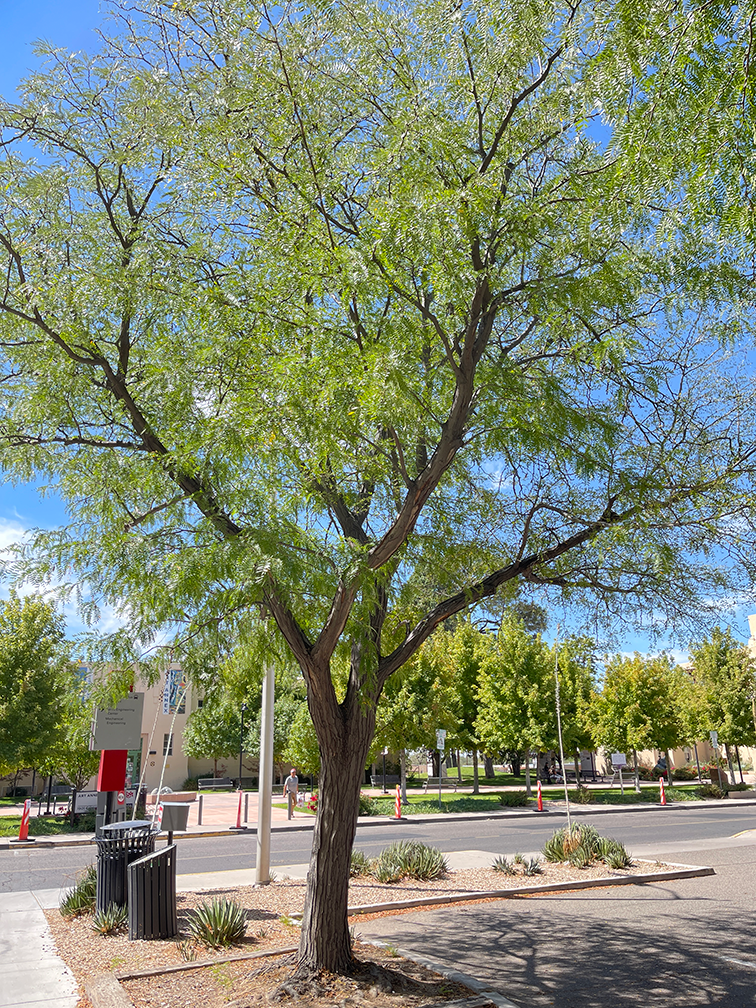
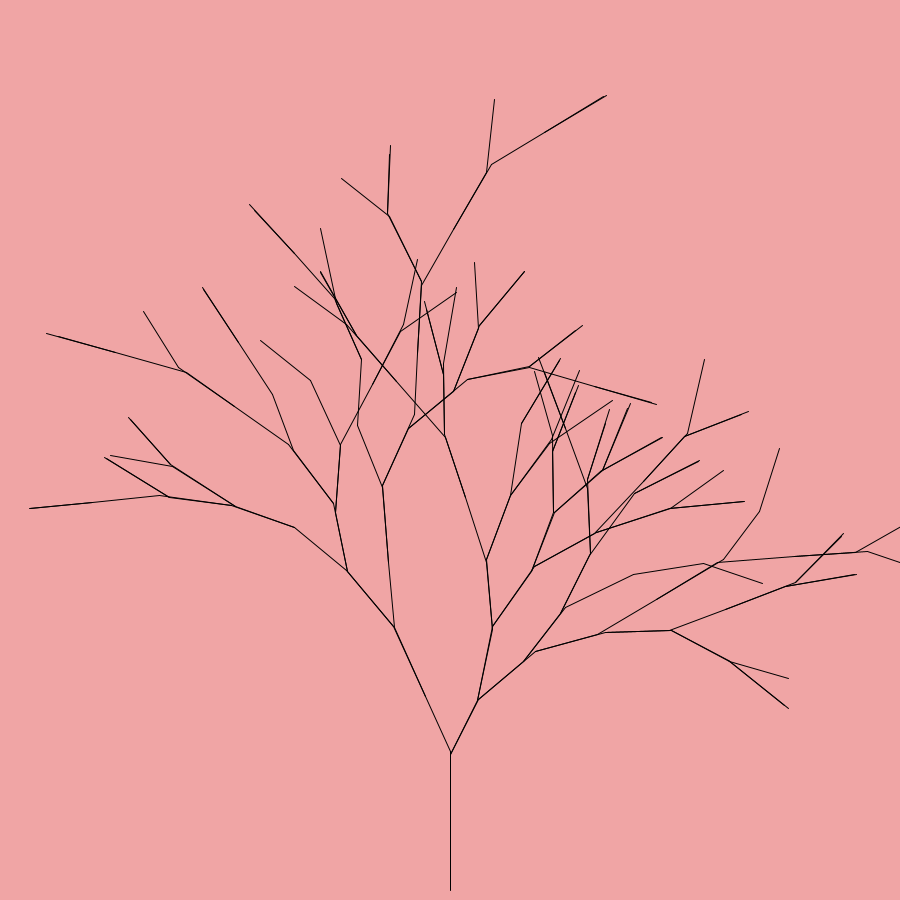
Choosing which plants would be best to reproduce was a somewhat simple matter of identifying repeating patterns in each object’s growth. I took the three with the most diverse and striking forms that I felt confident I could reproduce with a decent size of rules. I actually did attempt to make a fourth L-System from a plant with a pine-tree-like structure, but wasn’t happy with how it turned out due to its difficulty. As for my other systems, I iterated on different rule sets until I came upon one that could reach a very similar look and form to its parent picture with high probability. This came with its own difficulties, but by taking advantage of probabilities in the rule set as well as random adjustments to angle and size intrinsically gave it a much more natural feel that helped solve this.

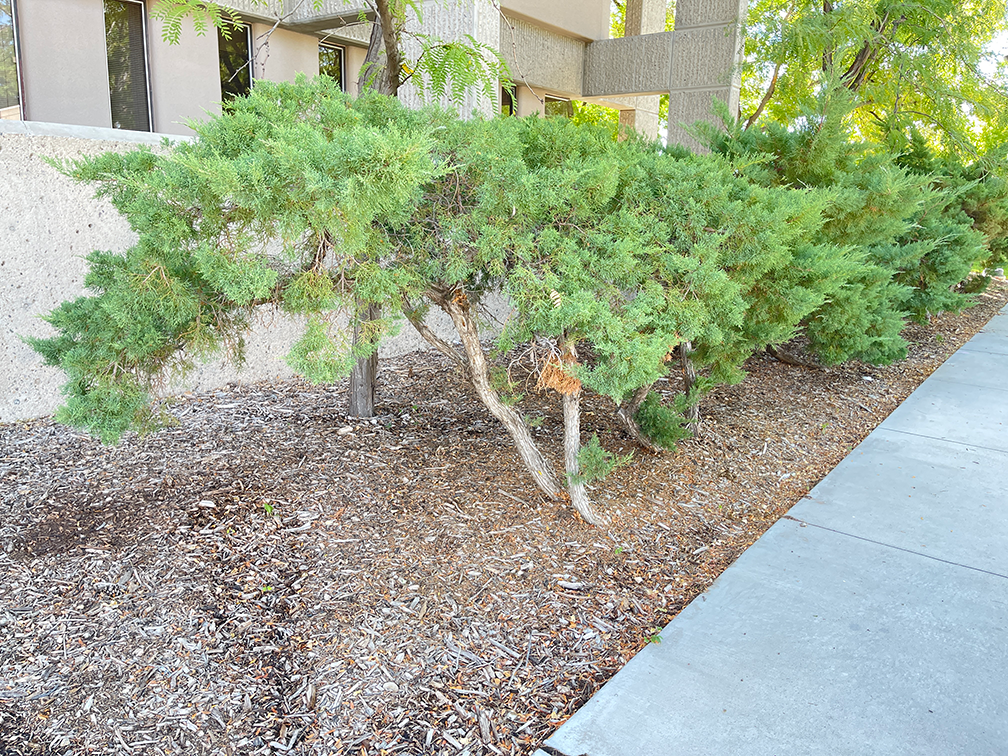
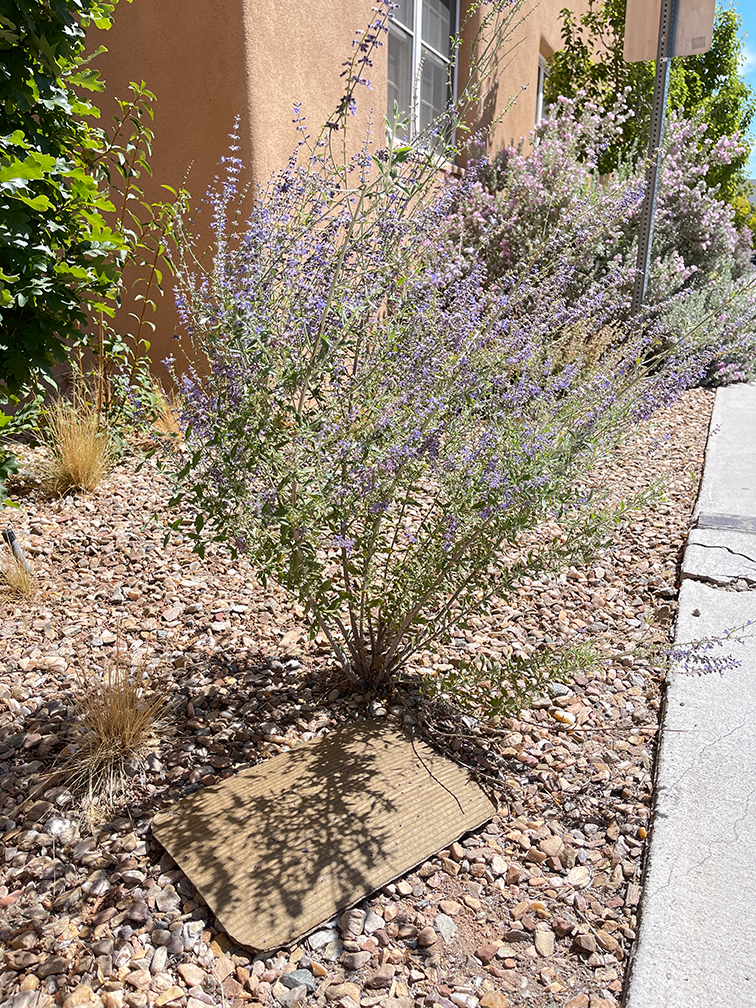
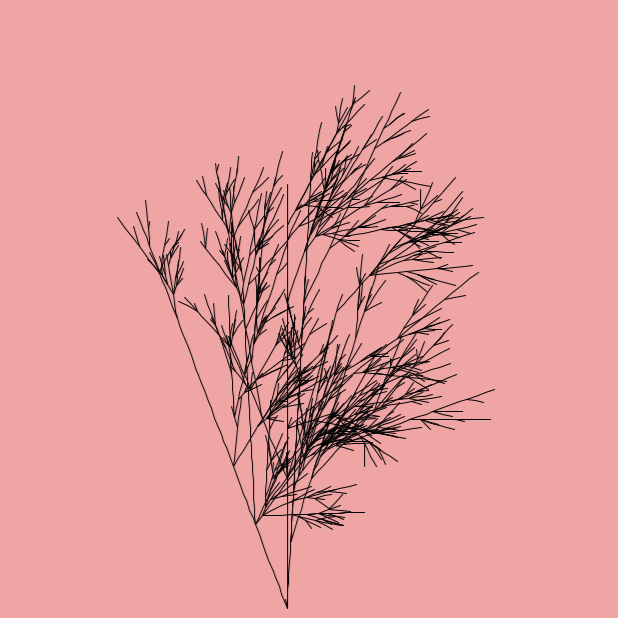
I feel that each of the systems do quite a good job at replicating the form and patterns of each of these plants. The lavender plant in particular received the most attention, as I had difficulty introducing the slight sway seen in the photograph. I strayed away from adding any leaves or other colorful features as to not cover up any of the structure, as well as because I feel there’s an aesthetic beauty in the minimalist lines whose shape suggest a form much more detailed!
Fabrication into an Object
Due to the minimalistic nature of nature of the systems that I find so aesthetically pleasing, I felt immediately that some form of casual wear would be a great object to fabricate with this design. There’s many fantastic ways to transfer designs over to clothing, but for this assignment I decided to go with simple fabric transfer paper due to personal limitations. This route was fantastic though, as it turned my everyday printer at home into a mini design shop. So then, with the process determined, what was left was to pick a piece of clothing and a system design to go along with it! The choice of one certainly impacted the other, so I started with clothing and settled on attempting to fabricate the design onto a hat.
With a hat picked out and ready to be processed, next was to choose a design. All three systems offer a sort of simple logo/design to look at that invokes a little thought which I really value in a good dad hat, but one of the designs seems to jump out at me more than the others. The system I ultimately settled on was the lavender plant design, with its dense leaves and slightly off center sway, it gives a spectator a clean design that doesn’t have too much or too little detail. This system also worked the best since the lines intersect each other more often and in greater number than the others, so each line is less likely to get lost on the clothing’s fabric.
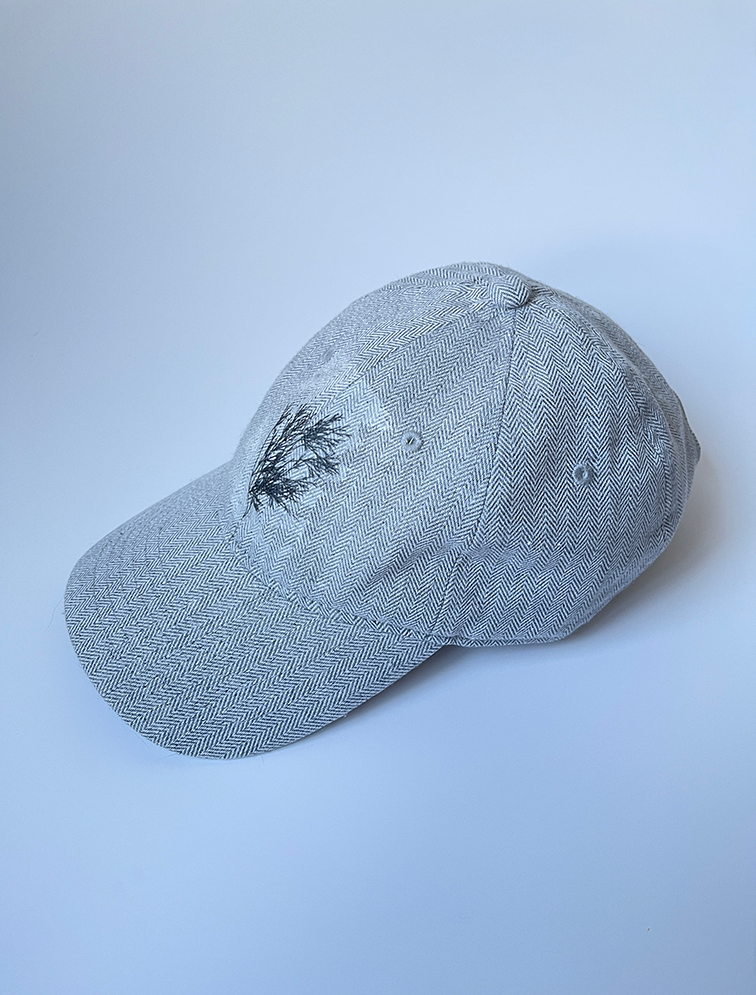
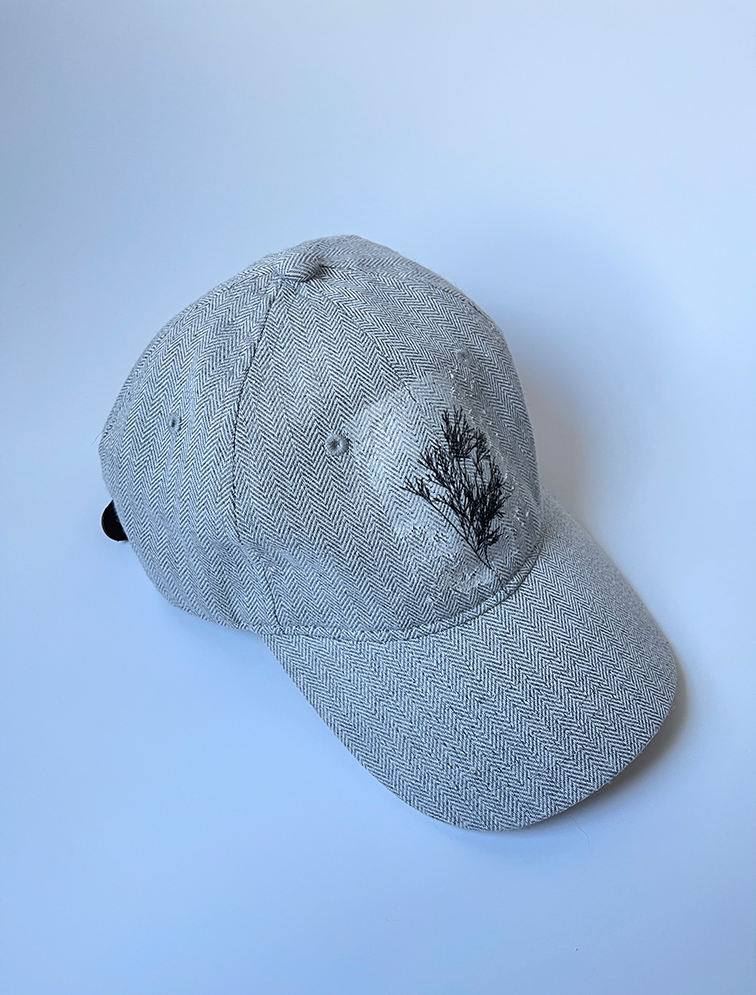
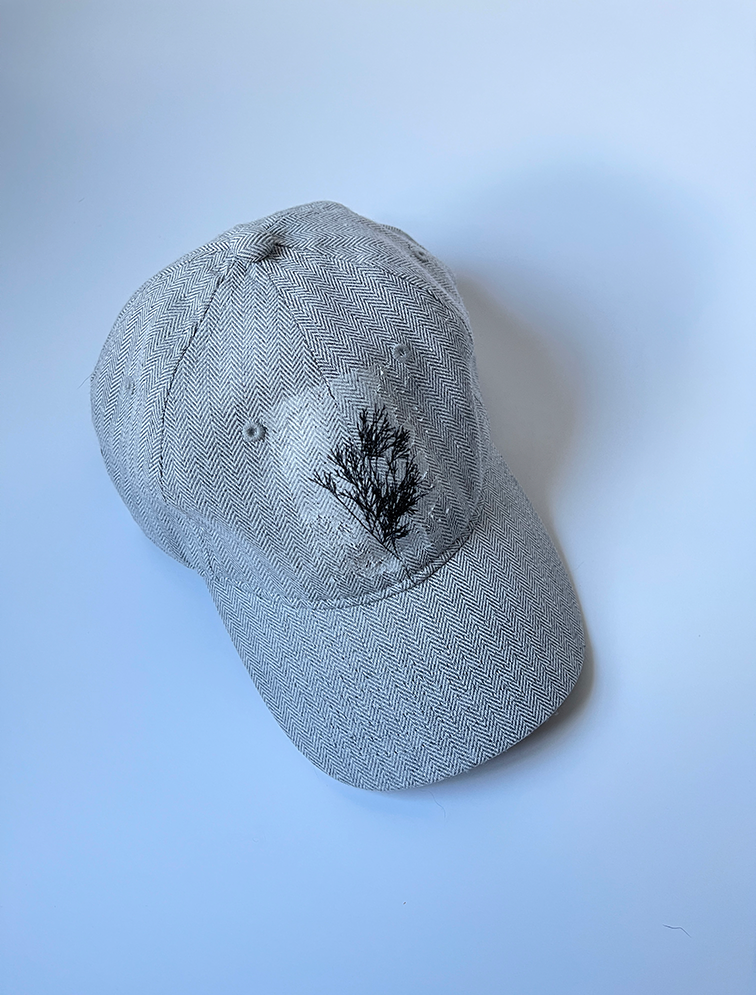
Turns out, transferring a design to a polyester hat using paper that is meant for flat, cotton shirts, can be a little bit difficult. The whole process took many hours and lots of uncomfortably close ironing on my knee (I had some heat protection thankfully!), and did present other difficulties as well. One of the more obvious difficulties is that the transfer wasn’t perfect. The lines aren’t as clear as they were originally, and most annoyingly of all some of the transfer paper transferred to the hat with the design, which you can see with the white haze surrounding the design.
Try as I might there was no great way to improve this, so instead I tried to give a forceful “patina” look, as if the design was on a white badge that has faded into the hat naturally over time. Though not perfect, I think these adjustments and makeshift ironing boards (knees) ended up making an aesthetically pleasing final result that I will actually be using quite often from here on out!
I hope you like the hat, and I can’t wait to see what other amazing stuff everyone else was able to fabricate for this assignment! Here’s a few more pictures of me actually wearing the hat because I was in a modelling mood 🙂 Have a great day!
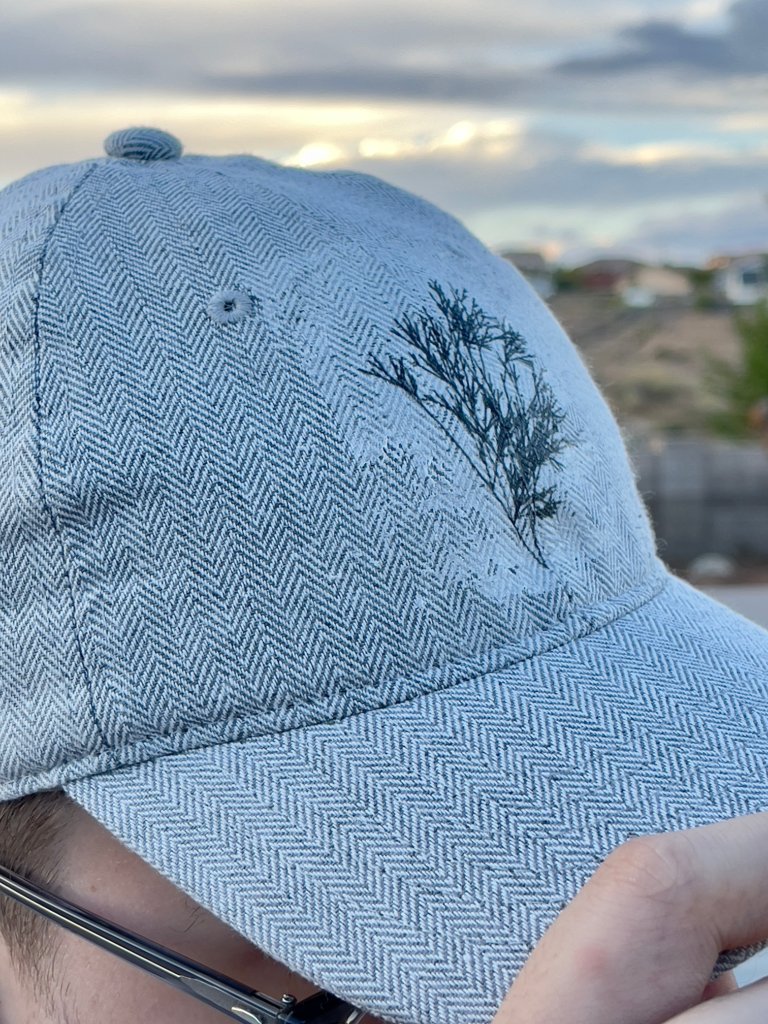

Processing Code
The program used for the above L-System generation as well as the original .png outputs are included here. A set of instructions is included in the header for your convenience.
Hey Christopher, first I really like how you formatted your post, it looks so nice. I also appreciate how precise you were in getting your systems to reflect the images you took. Polyester is such an odd fabric. I used to dye a lot of fabric and polyester never took the dye. Your hat turned out really nice despite the fabric fighting you.
The battle between synthetic and natural fabrics is eternal. There’s a special heat press attachment you can get that fits the curve of a hat, but barring that, I’ve used pillows or tightly rolled towels. Finding the right setting on an iron can also be a pain (again with the synthetic vs. natural fibers).
I was thinking that your designs would be really lovely as embroidery. I found this printable interfacing (https://www.amazon.com/Sulky-Sticky-Fabri-Solvy-Stabilizer-8-5/dp/B004R2B3NU/ ) that dissolves in water (if you want to hand embroider). Bonus: Machine embroidery on a hat https://youtu.be/Yafs_9BefJs?si=zAU7sSfV11Kx0BIQ&t=1210
One of the things you commented on was the aesthetics of minimalism, and that’s something that I wanted to touch on. L-Systems give us an opportunity to break down a form to its core representation, to strip away color, texture, value. Understanding shape and how to be expressive within those strictures and guidelines is something that many artists pursue relentlessly throughout their careers.
And I think you did very well in that regard. 😀
Hi Christopher!
I love the way you really considered the shape of the plant in your L-System designs, and the final product is very chic. I find the aesthetics of the minimal design and monochrome color palette very pleasing to the eye! I would totally wear that hat.